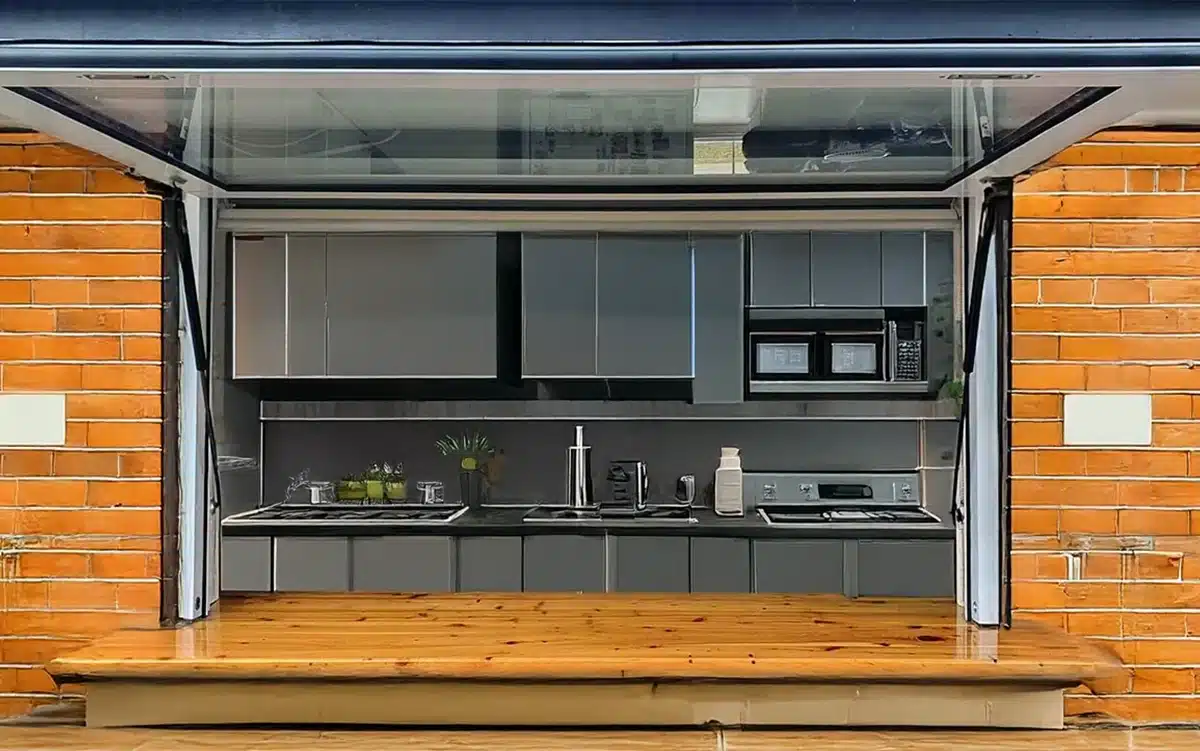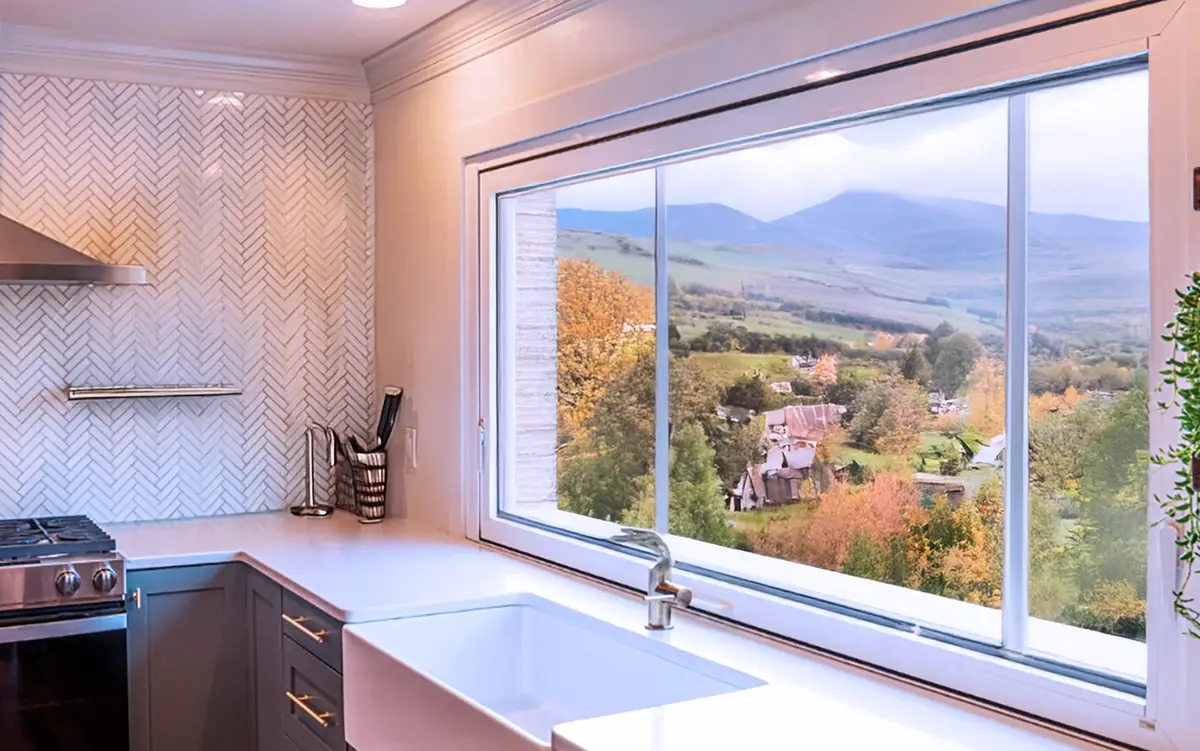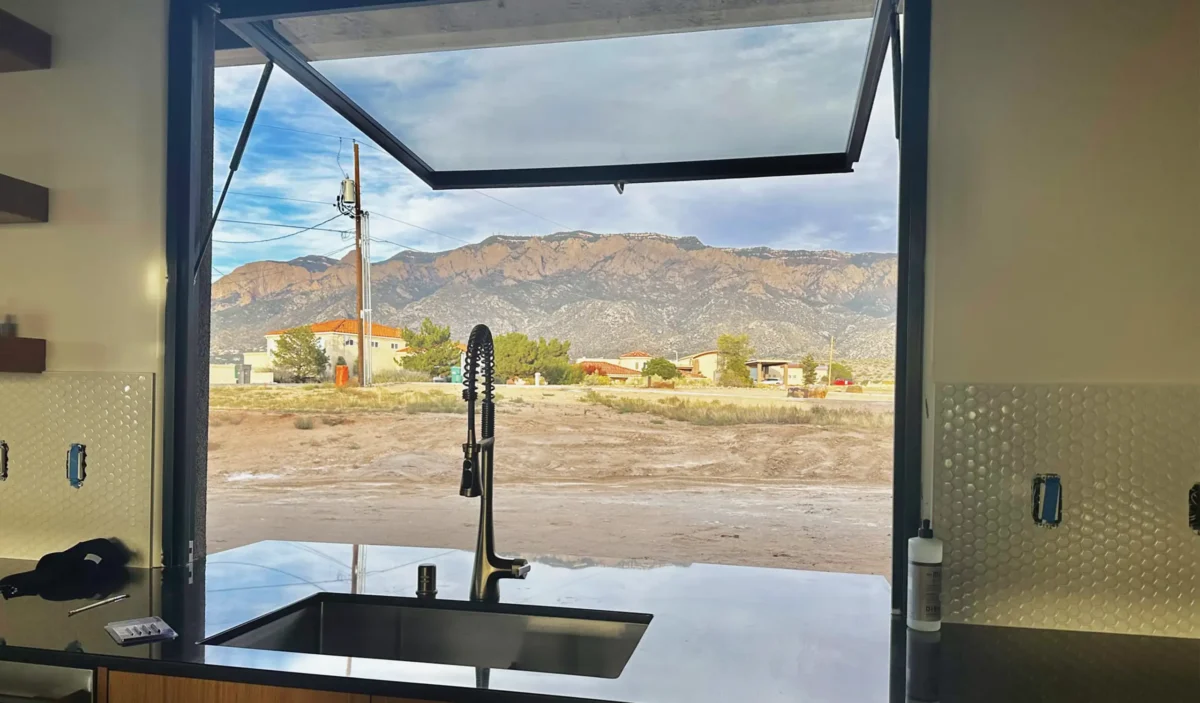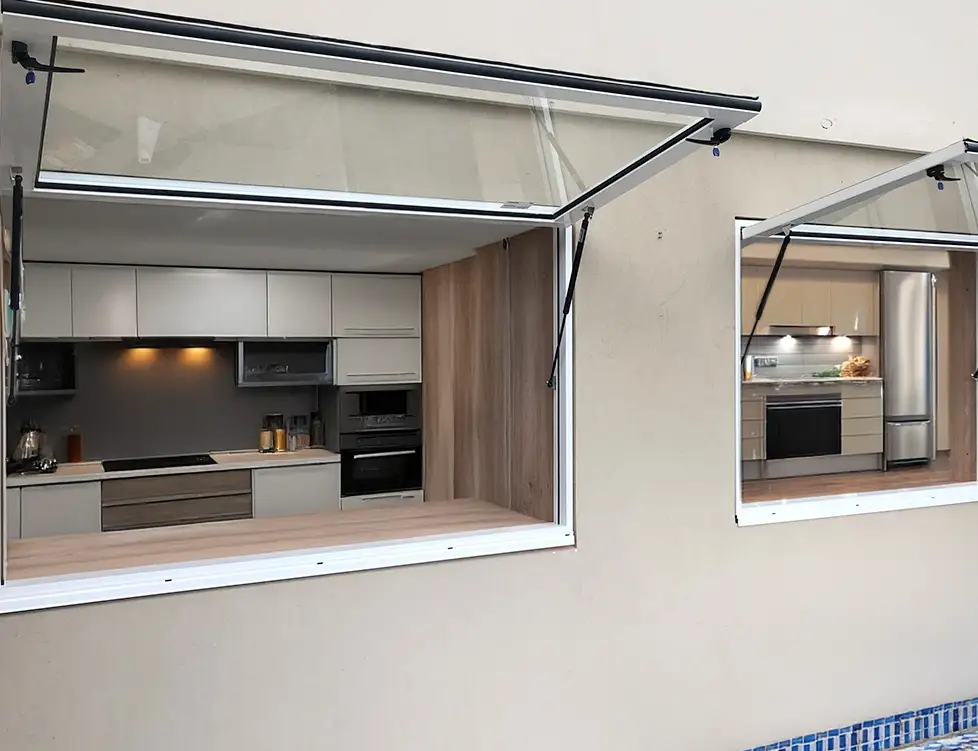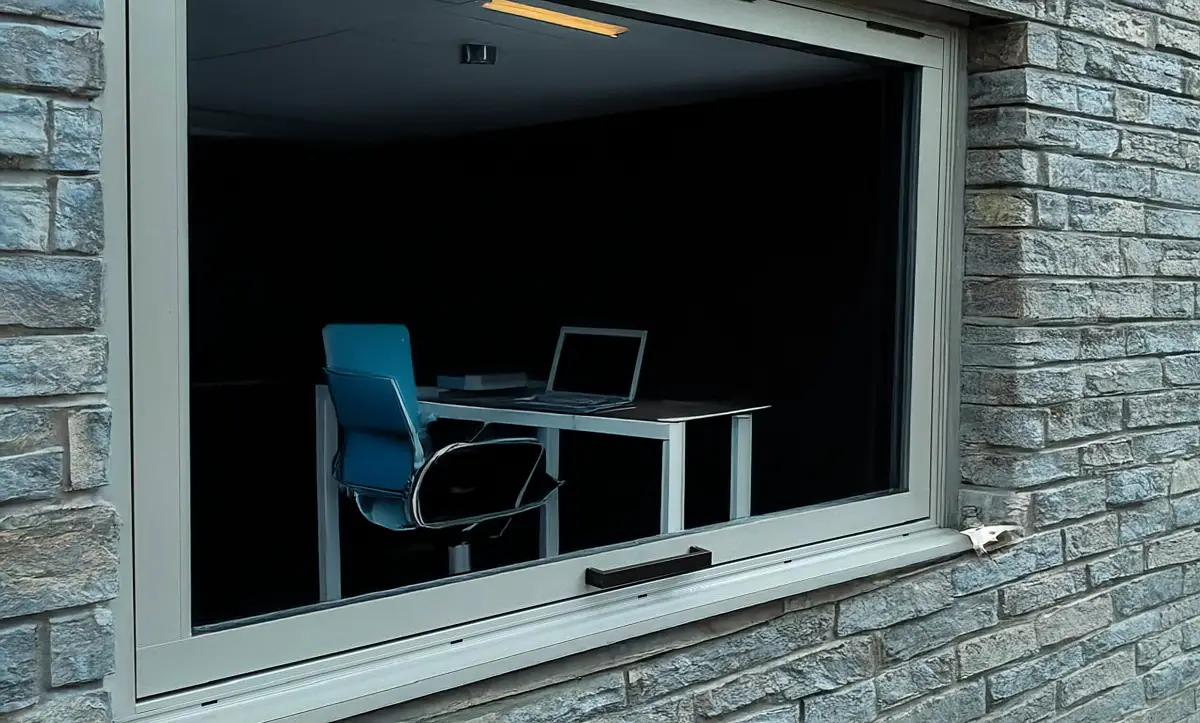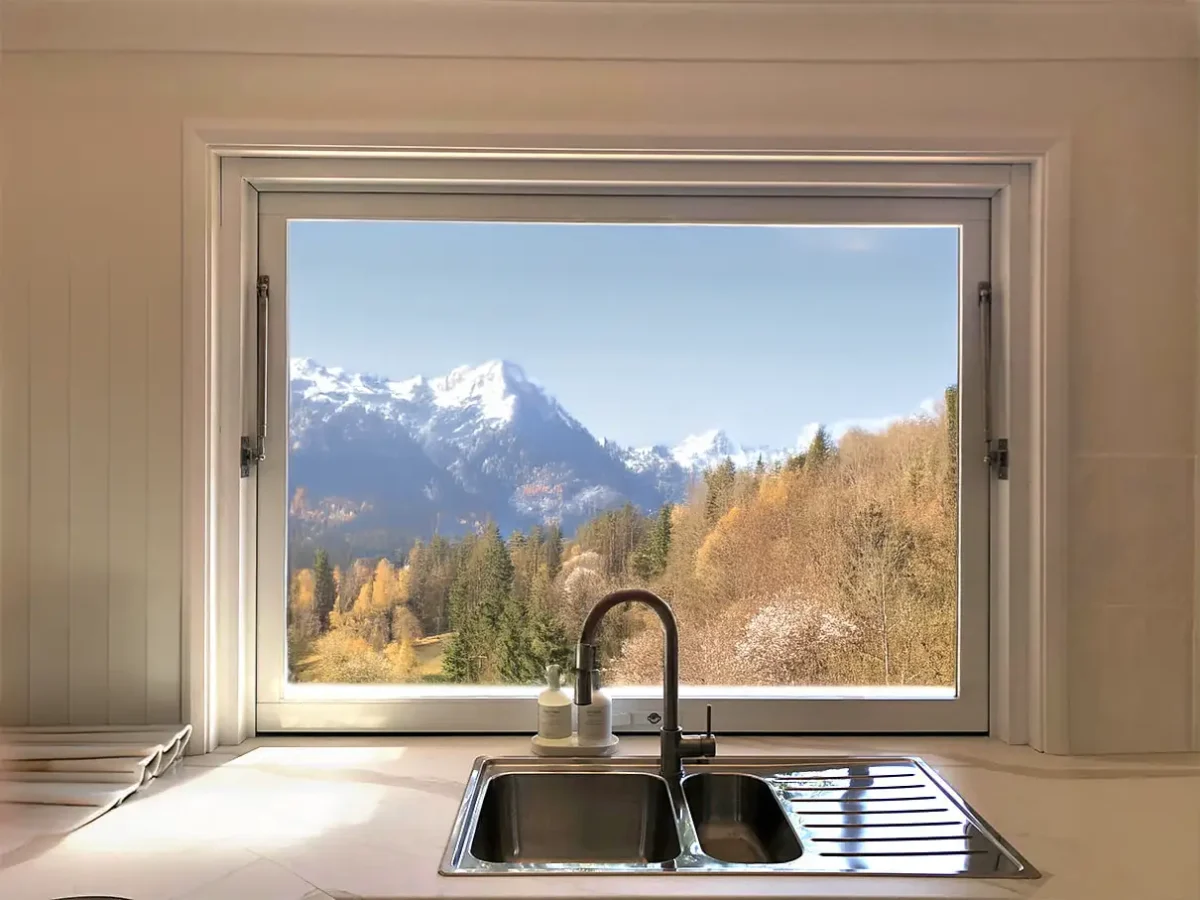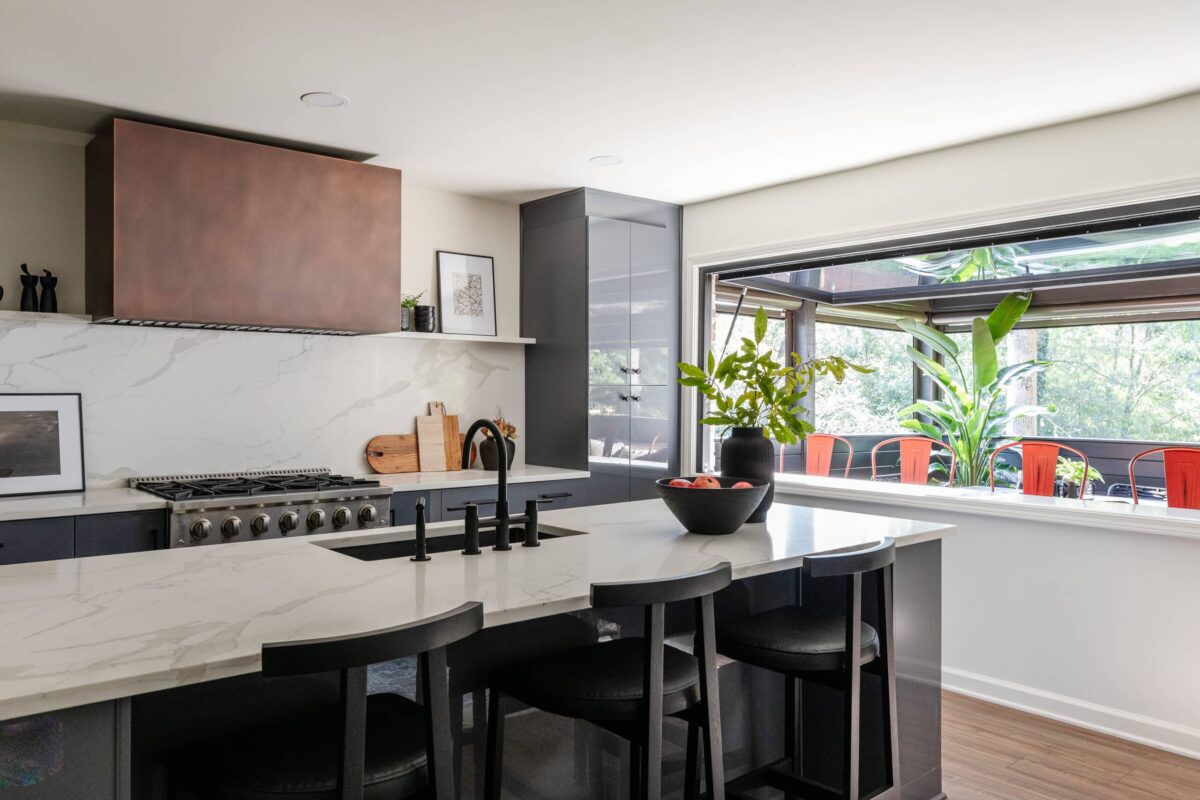Kitchen window modern styles deliver fresh designs and open sightlines that enrich daily cooking. The right setup draws in sunshine, merges interior with exterior beauty, and elevates the mood. These enhancements can boost efficiency and brighten even the coziest kitchen corner. Whether you crave a minimalist format or a grand pass-through, the possibilities can feel limitless. In this guide, we explore how sleek windows can enliven your space. We share unique design ideas, window treatment tips, and pass-through innovations. Let’s discover how a well-planned window feature can change your entire kitchen experience.
Choose Our Innovative Pass-Through Windows from OpenUp
Our team takes pride in creating pass-through windows that fit a kitchen window modern aesthetic. OpenUp Windows offers solutions that let your cooking space flow into an outdoor living area. These windows also let in tons of daylight. We design them for durability, minimal upkeep, and a refined finish that suits both traditional and contemporary homes. Take a look at our latest collection at OpenUp Windows to see how we combine strong materials with timeless appeal. A well-chosen pass-through system can make hosting simpler and transform the way you enjoy your kitchen.
20 Kitchen Windows That Take In the View
Modern kitchen windows bring a sense of openness that redefines the room. Below are 20 creative ways to admire the scenery while prepping meals or entertaining. Each design embraces natural light and enhances the cooking space.
Treetop Expanse
A treetop expanse window places you at eye level with surrounding foliage. It turns meal prep into a relaxing ritual. Extended glass panels can replace upper cabinets, providing an unobstructed look at the sky and branches outside. This style works well in homes bordered by tall trees, bringing in the serenity of nature while maintaining a sleek, contemporary feel.
Garden Connection
A window that opens to a vibrant garden scene creates a seamless link between indoors and outdoors. It acts like a green painting you can admire each day. To extend the view, place the window behind the sink or along a countertop. If you have a herb garden outside, you can quickly reach for fresh ingredients while cooking.
Picture-Perfect
A picture window stands out as a large, fixed pane of glass that frames the world outside like living art. It lacks any mullions or operational features, so the focus is on clarity. By investing in quality glass with a low-profile frame, you’ll capture maximum daylight, creating a focal point in your modern kitchen.
Sunroom Inspiration
A sunroom-inspired kitchen window modern approach uses multiple windows grouped together. This design integrates overhead skylights or a glass ceiling extension for a bright, greenhouse-like vibe. The goal is to let in enough sunlight to reduce the need for artificial lighting during the daytime, making your kitchen feel warm and inviting year-round.
Bay Window Magic
A bay window juts out beyond the exterior wall and creates extra interior space. You can use the ledge as a seating nook or a display area for potted herbs. The three-panel structure draws attention, making the area feel more dynamic. This style pairs well with both contemporary and traditional aesthetics.
Backyard Focus
Some kitchens open directly onto a backyard or patio. A wide, horizontal window in this space frames the backyard as a natural extension of the cooking area. Sliding or folding glass windows make it easy to pass food to an outdoor dining table while maintaining an open and airy feel.
Smooth Transition
A smooth transition between the kitchen and the outdoors can be achieved with windows that match the home’s architectural lines. Go for flush thresholds and matching flooring to unite spaces. If you’re partial to a crisp, modern style, choose uniform frames that blend with wall finishes.
Wraparound Views
Wraparound windows encircle corners to embrace multiple angles of outdoor scenery. This works best in kitchens with two exterior-facing walls. By installing windows across both walls, you capture panoramic views, making the kitchen the heart of the home.
Elevated Clerestory Windows
Clerestory windows sit high on the wall, allowing natural light to enter without compromising privacy. They work well in modern and minimalist kitchens, creating an airy atmosphere while keeping countertops free of window treatments.
Frameless Glass Windows
For a contemporary kitchen, frameless glass windows maximize views and minimize obstructions. These sleek designs give an uninterrupted, seamless appearance, enhancing a minimalist aesthetic while providing ample natural light.
Arched Windows for a Classic Touch
Arched windows bring architectural character to a kitchen. Their soft, rounded shape breaks up rigid lines, adding elegance to modern spaces. These windows pair beautifully with traditional or transitional design themes.
Corner Windows for a Unique Perspective
Corner windows eliminate the bulkiness of walls and maximize scenic views. By extending glass panes around a kitchen’s edges, they create a striking open-space effect that feels expansive and luxurious.
Floor-to-Ceiling Windows
Floor-to-ceiling windows extend from the bottom of the wall to the ceiling, making the kitchen feel more expansive. This design works well for homes with beautiful outdoor surroundings, allowing natural light to flood the room while emphasizing a strong indoor-outdoor connection.
Smart Windows with Adjustable Tint
Modern kitchens can benefit from smart windows, which feature adjustable tinting for privacy and light control. These windows change opacity based on user preferences or ambient lighting, offering a high-tech solution for contemporary spaces.
Sliding Glass Walls
A sliding glass wall allows you to open up an entire section of the kitchen to the outdoors. This approach works particularly well in homes with patios or decks, blurring the boundaries between indoor and outdoor living spaces.
Transom Windows for Extra Light
Transom windows are small, horizontal windows positioned above standard kitchen windows or doors. They let in additional light without compromising wall space, making them ideal for kitchens with limited exterior wall openings.
Window Backsplash
A window backsplash replaces a traditional tile or stone backsplash with a long, narrow window that runs along the countertop. This design choice allows for both natural light and a scenic backdrop while cooking.
Diamond Grid Windows for a Vintage Feel
Diamond grid windows feature a crisscross pattern of glass panes, offering a vintage-inspired aesthetic. They are perfect for farmhouse kitchens or historical renovations, adding charm without sacrificing functionality.
Pivot Windows for Maximum Ventilation
Pivot windows rotate around a central hinge, allowing for excellent airflow and unique design appeal. These windows work well in contemporary kitchens where cross-ventilation is a priority.
Casement Windows for Classic Functionality
Casement windows open outward with a crank, offering a classic yet practical kitchen window solution. They provide excellent ventilation and work well above kitchen sinks or countertops, allowing for easy operation.
25 Stylish Kitchen Window Treatment Ideas
Window treatments can elevate a kitchen window modern look without blocking natural light. Whether you favor a breezy vibe or something more refined, these 25 options spark fresh ideas.
Cordless Wood Blinds
Cordless wood blinds feature a sleek, tangle-free design. They lend a timeless charm to your kitchen and adjust easily for light control. Because there are no cords, they’re safer for homes with kids or pets. These blinds come in various wood finishes, allowing you to match them with cabinetry or flooring. They offer a warm, natural aesthetic while remaining functional and practical.
Roman Kitchen Shades
Roman shades boast clean lines that fit a modern kitchen. Their single piece of fabric folds elegantly when raised. You can choose neutral fabrics for a minimalist effect or bold patterns to make the window the focal point. Roman shades also provide excellent insulation, helping regulate temperature and reduce glare.
Bamboo Window Shades
Bamboo shades introduce a laid-back, eco-friendly vibe. Bamboo’s natural look softens the edges of a sleek kitchen design. These shades filter sunlight gently, providing partial privacy while allowing a warm glow to fill the space. They work well in coastal, bohemian, or nature-inspired kitchens, adding organic texture and depth.
Patterned Cafe Curtains
Patterned cafe curtains cover the lower half of a window, allowing light in while maintaining privacy. Choose from floral, checkered, or geometric designs to complement your kitchen’s style. These curtains bring a cozy feel, ideal for farmhouse or country kitchens.
Outside-Mounted Blinds
Outside-mounted blinds extend beyond the window frame, offering full coverage and a polished look. These blinds create the illusion of larger windows while providing enhanced light control. They’re excellent for oversized kitchen windows that need additional shading.
Inside-Mounted Blinds
Inside-mounted blinds sit within the window frame for a clean, seamless appearance. They preserve the natural trim of the window and work well in kitchens with modern or industrial aesthetics. Opt for neutral colors or metallic finishes for a sophisticated touch.
Oversized Kitchen Window Treatment
For large kitchen windows, consider oversized treatments like floor-to-ceiling drapes or motorized roller shades. These options allow you to adjust light levels while adding drama to the space. Soft, flowing fabrics enhance an airy ambiance, while structured shades maintain a contemporary edge.
Floor-Length Kitchen Curtains
Floor-length curtains bring elegance to a kitchen with tall windows or glass doors. Opt for lightweight fabrics like linen or sheer panels to allow diffused light while maintaining privacy. These curtains can be pulled back with tiebacks for a sophisticated touch.
Layered Kitchen Window Treatments
Combining multiple window treatments, such as blinds with sheer curtains, adds depth and versatility. Layering allows you to adjust light filtration throughout the day, making it ideal for kitchens with varied lighting needs.
Window Treatment Hardware
Choosing the right hardware, such as decorative rods or brackets, can enhance the overall window design. Sleek metal rods work well in modern kitchens, while wooden or wrought iron hardware complements rustic or farmhouse styles.
Woven Wood Shades
Woven wood shades blend natural fibers like jute, bamboo, or reeds to create a textured look. They provide privacy while maintaining an organic, earthy feel that pairs well with wooden cabinetry and neutral tones.
Nautical Kitchen Window Treatment
For a coastal-inspired kitchen, consider nautical-themed window treatments like navy-and-white striped curtains or rope tiebacks. These elements bring a breezy, seaside charm to the space.
Formal Kitchen Window Treatments
Elegant draperies with valances or swag curtains can give a formal touch to a luxurious kitchen. Choose rich fabrics like velvet or silk for a grand aesthetic.
Matching Kitchen Window Treatments
Consistent treatments across multiple kitchen windows create a unified design. Matching shades or curtains ensure a cohesive look, especially in open-concept kitchens.
Black Window Blinds
Black blinds make a bold statement, offering a dramatic contrast to white or neutral kitchen decor. They pair well with industrial, minimalist, or modern farmhouse aesthetics.
Single Cafe Curtain Panels
A single-panel cafe curtain covers only the lower portion of the window, making it an ideal choice for kitchens that need privacy without sacrificing natural light. This treatment is perfect for smaller windows near breakfast nooks, where a cozy atmosphere is desired. Available in various fabrics and patterns, these curtains can blend seamlessly into both modern and classic kitchen décors. Opt for lightweight, airy materials like linen or cotton to maintain an inviting ambiance while keeping the space bright.
Roll-Up Window Shade
Roll-up window shades offer a straightforward, easy-to-use solution for kitchen windows. They are available in a variety of materials, including fabric, vinyl, and woven bamboo, giving homeowners plenty of style choices. These shades roll up neatly at the top when not in use, keeping the window unobstructed and maximizing natural light. Their sleek, minimalistic design makes them suitable for modern, industrial, or contemporary kitchen settings. They also provide excellent privacy and light control when needed.
Blue Kitchen Curtains
Blue kitchen curtains introduce a refreshing pop of color to the space, enhancing both modern and traditional designs. Soft pastel blues create a light, airy feel, making the kitchen appear more spacious, while deeper navy or cobalt blue curtains add sophistication and contrast. Blue curtains pair exceptionally well with white cabinetry, wooden accents, and metallic finishes, allowing for a balanced yet stylish aesthetic. Whether in solid hues or patterned prints, blue window treatments can define the kitchen’s overall mood and personality.
Coordinating Window Treatments
Coordinating window treatments with other kitchen décor elements creates a cohesive and well-thought-out design. By matching curtains, shades, or valances with dish towels, seat cushions, or rugs, you establish a unified theme. This approach works well in both traditional and modern kitchens, as it ties the entire space together. Subtle color matching can create a calming effect, while bold, contrasting patterns can add visual interest and depth to the room’s aesthetic.
Mounted Kitchen Window Treatments
Mounted window treatments, such as Roman shades, plantation shutters, or roller blinds, offer a seamless, built-in look that enhances both function and style. These treatments are directly attached to the window frame, creating a streamlined aesthetic that works well in contemporary, farmhouse, or minimalist kitchens. They provide excellent light control and insulation, helping to regulate temperature while maintaining privacy. Available in a range of materials from wood to fabric, mounted treatments contribute to a polished, well-designed kitchen environment.
Patterned Window Valance
A patterned window valance adds a decorative finishing touch to kitchen windows without overwhelming the space. Positioned at the top of the window, it frames the glass while allowing ample natural light to enter. Valances come in a variety of patterns, from subtle florals to bold geometric designs, enabling homeowners to tailor their kitchen’s aesthetic. Whether paired with blinds, curtains, or left as a standalone treatment, a valance can provide a charming accent that complements cabinetry, countertops, and overall color schemes.
Cafe Curtains with Decorative Trim
Cafe curtains with decorative trim introduce a vintage, handcrafted feel to the kitchen. Adding lace, tassels, or embroidered details enhances the curtains’ charm, making them a perfect fit for eclectic, cottage-style, or farmhouse kitchens. These curtains offer partial coverage, allowing filtered sunlight to enter while maintaining privacy. The intricate trim details can be chosen to complement existing décor elements, creating a cohesive, personalized look that enhances the overall warmth of the space.
Checkered Kitchen Curtains
Checkered kitchen curtains bring a timeless, rustic charm to the space, making them a staple in country, farmhouse, and traditional kitchens. Whether in bold red, classic black-and-white, or neutral gray tones, these curtains add warmth and familiarity. The checkered pattern blends well with wooden furniture, exposed brick, or vintage kitchen elements, creating a cozy and inviting ambiance. Lightweight cotton or linen fabrics ensure breathability and softness, keeping the kitchen environment comfortable.
Charming Cafe Curtains
Charming cafe curtains bring a soft, airy feel to any kitchen, making the space feel light and inviting. Made from breathable fabrics like linen or cotton, they drape elegantly while allowing natural light to filter through. These curtains are particularly well-suited for breakfast nooks, bay windows, or traditional kitchen settings. They add a touch of casual sophistication, making the space feel warm and welcoming without appearing overly formal.
Roman Shade With a Pelmet
A Roman shade with a pelmet adds a refined, structured look to kitchen windows. The pelmet, a fabric-covered frame positioned above the shade, conceals hardware and creates a neat, finished appearance. This design is particularly effective in contemporary and transitional kitchens, where clean lines and sophisticated details are preferred. By selecting coordinating fabrics or contrasting colors, the combination of Roman shade and pelmet enhances both functionality and visual appeal, making it a stylish choice for modern kitchen interiors.
Conclusion
Brightening your home through a kitchen window modern design can truly shift how you experience daily tasks. A great window embraces daylight, connects indoor activities to the outside world, and serves as a design focal point. Meanwhile, carefully chosen treatments let you manage privacy and soften the overall effect.
Whether you favor an expansive bifold model, a subtle awning style, or a classic bay window, there’s no limit to the creativity. We encourage you to explore the designs above and pick one that resonates with your taste and lifestyle.
Interested in taking your commercial design to the next level? Reach out to experienced window specialists and explore their selection of gas strut models. By choosing the right style and features, you can make a lasting impact and open the doors to new opportunities.
FAQs
What is a pass-through window in a kitchen?
A pass-through window connects the kitchen to an outdoor space or another room through a wide opening. It makes passing food, drinks, and utensils more convenient and often adds extra seating or a bar ledge.
Which window treatments are easiest to clean in the kitchen?
Shutters and blinds made of faux wood or vinyl are easy to clean because they resist moisture and grease buildup. A quick wipe with mild soap is typically enough to maintain them.
How can I increase privacy without losing light?
Cafe curtains, frosted film, and blinds that tilt are effective options. They let in natural light from the top portion of the window while blocking visibility from outside.
What materials are best for pass-through windows exposed to the weather?
Aluminum or steel frames, fiberglass, and treated wood are durable choices. Weather-resistant glass and sealing ensure longevity in varied climates.
Are large kitchen windows expensive to install?
Costs vary based on window size, material, and installation complexity. While large windows can be more expensive, they often boost a home’s value and provide energy savings through natural light.



